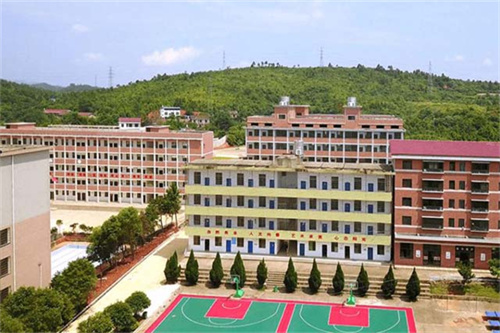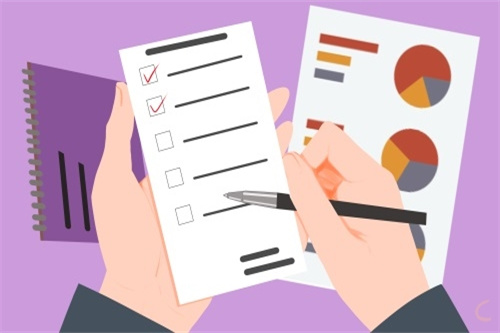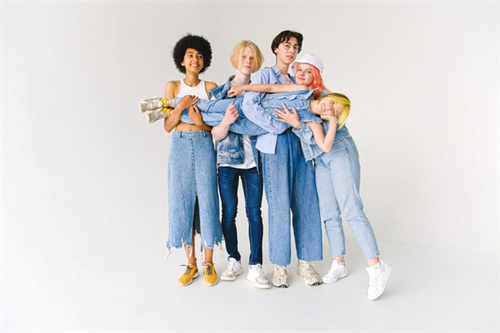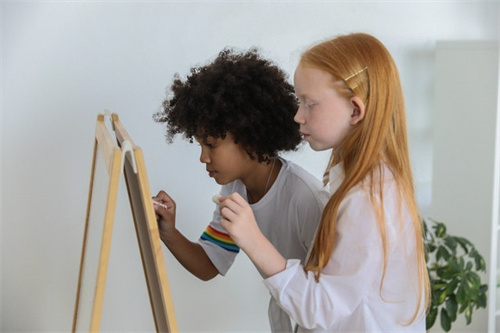【沈阳故宫导游】沈阳故宫英语导游词(推荐3篇)
第一篇:沈阳故宫的导游词
位于沈河区沈阳路171号,与繁华的中街毗邻,是全国保存至今的清代最早的宫殿建筑群,其历史价值和艺术价值仅次于北京故宫。
沈阳故宫博物馆所陈列的多半是旧皇宫遗留下来的宫廷文物。如努尔哈赤用过的剑,皇太极用过的腰刀和鹿角椅等。沈阳故宫博物馆陈列的艺术品也很丰富。在绘画陈列室里,有明、清两代一些大师的作品如清李鳟、金农、明文征明书画精品、陶瓷、雕刻、织乡、漆器等工艺品也不少。
沈阳故宫建于1625年,是后金第一代汗努尔哈赤开始修筑。努尔哈赤死后,第二代汗皇太极继续修建成功。沈阳故宫的建筑布局可以分为三路。东路为清太祖努尔哈赤时期建造的大政殿与十王亭。中路为清太宗皇太极时期续建的"大中阙,包括大清门、崇政殿、凤凰楼以及清宁宫、关睢宫、衍庆宫、启福宫等。西路则是乾隆时期增建的文溯阁、嘉荫堂和仰熙斋等。乾隆时皇宫已在北京,但他有时也“东巡”回沈阳看看。
第二篇:沈阳故宫简介导游词
大家好,我是你们这天的导语,很高兴这天能和你一齐度过,下方由我来给大家讲讲沈阳故宫吧:
沈阳故宫是我国仅存的两大宫殿建筑群之一,沈阳故宫占地面积六万多平方米,有古建筑114座,500多间,至今保存完好,是一处包含着丰富历史文化内涵的古代遗址。在宫廷遗址上建立的沈阳故宫博物院是著名的古代宫廷艺术博物馆,藏品中包含十分丰富的宫廷艺术品。
1961年,国务院将沈阳故宫确定为国家第一批全国重点文物保护单位;2004年7月1日,在中国苏州召开的第28届世界遗产委员会会议批准沈阳故宫作为明清皇宫文化遗产扩展项目列入《世界文化遗产名录》。
大政殿 大政殿是一座八角重檐亭式建筑,俗称八角殿。始建于1625年,是清太祖努尔哈赤营建的重要宫殿,是盛京皇宫内最庄严最神圣的地方。初称大衙门,1636定名笃恭殿,后改大政殿。八角重檐攒尖式,八面出廊,其下为须弥座台基。殿顶满铺黄琉璃瓦,镶绿剪边,正中相轮火焰珠顶,宝顶周围有八条铁链各与力士相连。殿前两明柱各有金龙盘柱,殿内为梵文天花和降龙藻井。殿内设有宝座、屏风及熏炉、香亭、鹤式烛台等。大政殿用于举行大典,如皇帝即位,颁布诏书,宣布军队出征,迎接将士凯旋等。此殿为清太宗皇太极举行重大典礼及重要政治活动的场所。 1644年(顺治元年)皇帝福临在此登基继位。 十王亭 十王亭位于大政殿两侧八字形依次排列,是满族八旗制度在宫殿建筑的反映,此建筑布局为中国古代宫廷建筑史所仅见。 其东侧五亭由北往南依次为左翼王亭、镶黄旗亭、正白旗亭、镶白旗亭、正蓝旗亭; 西侧五亭依次为右翼王亭、正黄旗亭、正红旗亭、镶红旗亭、镶蓝旗亭。 是清初八旗各主旗贝勒、大臣议政及处理政务之处。这种君臣合署在宫殿办事的现象,历史上少见。从建筑上看,大政殿也是一个亭子,但是它的体量较大,装饰比较华丽,因此称为宫殿。大政殿和成八字形排开的10座亭子,其建筑格局乃脱胎于少数民族的帐殿。这11座亭子,就是11座帐篷的化身。帐篷是能够流动迁移的,而亭子就固定起来了,显示了满族文化发展的一个里程。 大清门 大清门是盛京皇宫(今沈阳故宫博物院)的正门,俗称午门,它是一座面阔五间的硬山式建筑,房顶满铺琉璃瓦,饰以绿剪边,尤其是大清门山墙的最上端,南北突出的四个墀头,三面皆用五彩琉璃镶嵌而成,纹饰为凸出的海水云龙及象征吉祥的各种动物,做工精巧,栩栩如生。此门庄严富丽,与整个宫殿建筑混成一体,显得十分协调。 大清门建于天聪六年(1632年)之前,为盛京皇宫中皇太极续修的早期建筑之一。原称大门、正门。1636年定宫殿名时称大门为大清门。大清门的.满文译音为“代青杜卡”(代青即大清,杜卡为门)。 崇政殿 崇政殿在中路前院正中,俗称“金銮殿”,是沈阳故宫最重要的建筑。整座大殿全是木结构,面阔五间进深三间。前后出廊硬山式,辟有隔扇门,前后出廊,围以石雕的栏杆。殿顶铺黄琉璃瓦,镶绿剪边,正脊饰五彩琉璃龙纹及火焰珠。殿身的廊柱是方形的,望柱下有吐水的螭首,顶盖黄琉璃瓦镶绿剪边;殿前月台两角,东立日晷,西设嘉量;殿内“彻上明造”绘以彩饰。内陈宝座、屏风;两侧有熏炉、香亭、烛台一堂;殿柱 是圆形的,两柱间用一条雕刻的整龙连接,龙头探出檐外,龙尾直入殿中,实用与装饰完美地结合为一体,增加了殿宇的帝王气魄。此殿为清太宗皇太极陛见臣下,宴请外国使臣以及处理大政的常朝之处。公元1636年,后金改国号为大清的大典就在此举行。“东巡”诸帝于此举行“展谒山陵礼成”等庆贺典礼。 凤凰楼 崇政殿北首的凤凰楼,建造在4米高的青砖台基上,有三层,三滴水歇山式围廊,顶铺黄琉璃瓦,镶绿剪边。此楼为盛京最高建筑,故有《盛京八景》之一“凤楼晓日”、“凤楼观塔”等传称。凤凰楼上藏有乾隆御笔亲题的“紫气东来”匾。 清宁宫 清宁宫为五开间前后廊硬山式。是清太宗皇太极和皇后博尔济吉特氏居住的“中宫”。 室门开于东次间,屋内西侧构成“筒子房”格局,东梢间为帝后寝宫。宽大的支摘窗式样朴素,棂条皆以“码三箭”式相交,宫门亦不用隔扇式。正对宫门竖立祭天的“索伦竿”,此均为源自满族民间的传统风格。殿顶铺黄琉璃瓦镶缘剪边,前后皆方形檐柱,柱头饰兽面,檀枋施彩绘等,则是吸收汉、藏民族建筑艺术。 文溯阁 文溯阁建于1782年(乾隆四十七年)。专为存放《文溯阁四库全书》而建, 另有《古今图书集成》亦存于阁内。是沈阳故宫西路的主体建筑,建筑形式仿照浙江宁波的天一阁,面阔六间,二楼三层重檐硬山式,前后出廊,上边盖黑色琉璃瓦加绿剪边,前后廊檐柱都装饰有绿色的地仗。所有的门、窗、柱都漆成绿色,外檐彩画也以蓝、绿、白相间的冷色调为主,这与其它宫殿红金为主的外檐彩饰迥然不一样。其彩绘画题材也不用宫殿中常见的行龙飞凤,而是以“白马献书”、“翰墨卷册”等与藏书楼功用相谐的图案,给人以古雅清新之感。采用黑色琉璃瓦为顶,主要是为了使整座建筑外观风格相统一。文溯阁后面,有抄手殿廊连之后仰熙斋,斋后为九间房,其中有芍药圃、梧桐院等。这是乾隆皇帝“东巡”时的读书之所。 金水桥 沈阳故宫博物院副院长李声能透露,沈阳故宫正门前的“金水桥”属于违规建筑,与整个风貌不相符。沈阳市文物部门已经下发了整改拆除通知限期拆除。 2014年9月25日14时30分许,沈阳故宫东南侧,在“金水桥”施工墙外,有一大片被围挡围起的施工工地。从围挡的缝隙中能够看到,工地中一辆作业车正在施工。 最佳旅游时光 沈阳的春天和秋天时光短促,升温、降温幅度很大;夏季平均气温24度,比南方凉快3-5度;冬季寒冷干燥,务必携带羽绒服或棉大衣。雨季主要在春、夏与夏秋之交。每年4-10月是沈阳旅游的黄金季节。你们来的正是时候。 当地特产 沈阳的美食佳肴历史悠久,制作精湛,在满族菜肴基础上,借鉴和发展了传统宫廷的精良技术,又荟萃了中国名菜之精华,构成了自我的独特风格。满汉全席是最具有代表性的。由于历史上,沈阳一向由少数民族和汉族轮流统治,因此也传入了各民族的风味小吃。比如回民小吃马家烧麦,满族小吃那家白肉血肠,朝鲜族的打糕、烤牛肉、西塔大冷面等。沈阳也有自我的传统小吃老边饺子,老山记海城馅饼。 沈阳主要商业街区分布在中街(步行街)、太原街一带。沈阳的大部分商厦营业时光一般是上午9:00开门,晚上10:00关门。五爱市场,位于沈河区风雨坛街,是全国五大集贸市场之一,是辽宁乃至东北地区服装轻工批发市场,品种齐全、物美价廉。公交117路、125路、132路、133路、134路、151路、207路、212路、213路、222路、223路、224路、224路区间238路246路、256路、263路、266路、270路、273路、274路、277路、293路、297路、298路、326路、333路、334路、338路、501路、523路、800路可达。南湖公园古文物市场,有几十家店铺经营着古玩、字画、印章、瓷器、玉器、木雕、珊瑚、珠宝翠钻;还有遍体绿锈的历代古钱。沈阳的名特产品,如御赐枕、羽毛画、绢花、彩石镶嵌画等,都能在那里觅得。每逢周日,那里格外热闹。 游客们游玩好沈阳的古遗址、古城址、古墓葬、古建筑、烽火台、边墙和历史纪念物、革命纪念物后。能够到具有现代性的娱乐场所去娱乐放松一下。 Today we are visiting Shenyang Palace Museum. As we all know, Shenyang is "the birthplace of one dynasty, the capital of two emperors", full of rhyme, fresh wind and rich historical flavor. Shenyang famous building has "one palace and two mausoleums", and this palace is the magnificent building in front of us - Shenyang Palace Museum. Shenyang Palace Museum was called "Shengjing Palace" when it was first built. After the Qing Dynasty moved its capital to Beijing, it was also called "the palace of the accompanying capital" and "the palace of the remaining capital", and it was known as "the holy relic of the early Republic of China". It was first built in 1625 (the tenth year of emperor Tianming of the later Jin Dynasty) and completed in 1636 (the first year of Chongde of the Qing Dynasty). It was built and used by Nurhachi and Huangtaiji of the Qing Dynasty. In 1643, Emperor Fulin of the Qing Dynasty ascended to the throne and changed to Shunzhi. So Shenyang can also be said to be "the birthplace of one dynasty and the capital of Three Emperors". Shenyang Palace Museum covers an area of more than 60000 square meters, with more than 100 buildings and more than 500 rooms. According to its layout, it can be divided into three parts: East Road, middle road and West Road. East Road is the part of the building we can see in front of us. It was built in Nurhachi period and has strong Manchu characteristics. The buildings on the East Road mainly include Dazheng hall and Shiwang Pavilion. You can see that the octagonal hall in the middle of the square is Dazheng hall. Dazheng hall, also known as "Da yamen" and "Du Gong hall", is the place where Nurhachi attends and works. Dazheng hall is 18 meters high, under which there is a 1.5-meter-high xumizuo platform surrounded by exquisitely carved blue stone fence. It is an octagonal pavilion building with double eaves and a sharp top. The top of the hall is yellow glazed tile with green trimming. In the center is the sharp top of the vase flame beads. (the vase is a Buddhist weapon, which is regarded as a sacred thing, and the flame beads are Ruyi beads. It is said that those who get this bead can satisfy all kinds of desires. )There are eight colorful glass ridges on the top and bottom of the double eaves. On each ridge stands a Mongolian strongman, with his face facing the top, his legs slightly bent and his side drawn, which symbolizes the unity of all directions. The 10 pavilions on both sides are the ten King pavilions. From the overall architectural layout, the main hall is in the middle. There are 10 pavilions on both sides, from north to south, unfolding in the shape of eight characters, which makes the main hall more far-reaching visually. This kind of spatial processing is only one example in Chinese palace architecture. Shiwang Pavilion is also known as "eight flag Pavilion". Some tourists may think of the eight flag Pavilion (to the East are left wing Pavilion, yellow flag Pavilion, white flag Pavilion, white flag Pavilion and blue flag Pavilion). In the West are the right wing Wang Ting, the right yellow flag Pavilion, the right red flag Pavilion, the red flag Pavilion and the blue flag Pavilion. There should be eight pavilions. What are the other two pavilions? The pavilions at the left and right ends near the main hall are the left wing Wang Ting and the right wing Wang Ting, which are the offices of the left and right wing princes. The eight flag Pavilion is the office of the eight flag leader. This pattern of building the hall of King Han"s hearing together with the pavilions of princes and ministers of eight banners waiting for the court to discuss affairs was decided by the Eight Banners system of military and political integration at the beginning of Nurhachi"s rise. It reflects the historical features of Nurhachi"s later years, when he was the sole leader of a Khan and the ruling party of Bahe shuobel. To the west, you come to the middle road of Shenyang Palace Museum. The buildings on the middle road are mainly built in the period of Huangtaiji, where many historical stories are staged. Shenyang Palace Museum middle road building has its own system, a total of three courtyard. From south to north, there are daqingmen, Chongzheng Hall, fenghuanglou and Qingning palace. They are all arranged on a central axis, and there are some symmetrical ancillary buildings on both sides. Daqingmen is the main gate of Shenyang Palace Museum, commonly known as Meridian Gate. We just entered the Palace Museum from there. (daqingmen is a five room hard mountain building). At that time, daqingmen was not allowed to enter or leave as casually as it is now. Daqingmen was not only the place where civil and military officials were waiting for the court. It is also the place where Huang Taiji accepted the gratitude of the officials. At that time, after the Ming Dynasty"s famous generals Hong Chengchou and Zu dashou came to the Qing Dynasty, they knelt down in front of the gate of the Qing Dynasty to apologize for their surrender, waiting for orders to summon them, and were received by Huang Taiji. When an official is promoted or given a pardon, he has to kowtow to the "Chongzheng Hall" at the north gate. You can see that the solemn hall in front of us is Chongzheng Hall. The former name of Chongzheng Hall is "main hall", commonly known as "Jinluan hall". It is the place where Huang Taiji deals with military and political affairs, receives foreign envoys and frontier minority representatives. Chongzheng Hall is a five room nine Lin hard mountain style building. The most eye-catching places are the yellow glazed tile green trimming on the top of the hall, the colorful glazed components of Longtou, Bofeng, Longkou, peak and ridge, as well as the colorful dragon and auspicious animals in relief, which make the whole hall more noble, solemn and spectacular. Another ingenuity of Chongzheng Hall is that the upper part of the two front and rear external eaves columns is shaped like a dragon. The dragon"s head protrudes from the column head, and the dragon"s body passes through the corridor directly into the hall. The posture is vivid, as if the dragons are flying out of the hall. It has dual functions of structure and decoration, and the design is very ingenious. Around the Chongzheng Hall, we can see the Phoenix building. The vestibule of the Phoenix building is located in the middle of the "former dynasty and later bedroom", which is a transitional courtyard. The Phoenix building is built on a 3.8-meter-high blue brick platform. The platform has 24 steps, which symbolizes the 24 solar terms. Every 24 solar terms is a year. The emperor steps on the 24 platform every day, which means that the Qing Dynasty can go through thousands of years The Fenghuang tower is a three story building with a height of 18.31 meters. It was originally called Fengxiang tower. It is a place for Huang Taiji to rest, hold banquets and read books. In 1743 (the eighth year of the reign of Emperor Qianlong), it was changed to its current name. The gold plaque of "Ziqi Donglai" hanging above the main door of Fenghuang building was written by Emperor Qianlong. It means that the Great Qing Dynasty"s national strength and prosperity came from the eastern capital. It expresses the Qing emperors" worship for the place where their ancestors started their business. Fenghuanglou is not only the gate of the back palace, but also the highest building in Shengjing city at that time. Therefore, it has the reputation of "Fenglou Xiaoyue" and "Fenglou guanta", and is listed as one of the Eight Sights of Shengjing city. Through the Phoenix Tower, we are now in the back palace of Huang Taiji, the residence of Huang Taiji and his concubines. The overall architecture of the back palace is higher than that of the previous dynasty. This feature of "high palace and low Palace" reflects the traditional living habits of the Manchu people. For the characteristic buildings of the harem, there is a popular saying: Pocket room, ten thousand character Kang and chimney falling on the ground. What is a pocket room? You can see that the front and back porch building in front of us is the Qingning palace. You can see that there are five rooms in the palace, and the door is not opened in the middle, but in the south of the east two rooms, which is like a pocket. Qingning palace, originally known as the "main palace", is the most characteristic building of Manchu residence in Shenyang Imperial Palace. The east one is the bedroom of Huang Taiji and empress xiaoduanwen (boljijit"s family). In 1643 (the eighth year of Chongde), Huang Taiji ended up sitting on the South Kang. Later, he was buried in Zhaoling. What"s the matter with the Wanzi Kang? You can see that the West three rooms of the palace are connected, and the north, West and South three sides are connected to form a ring Kang, which is like "Wanzi Kang", so people commonly call it "Wanzi Kang". What"s the matter with "chimney falling on the ground"? The chimney of the palace of Qingning is behind the palace of Qingning, which is built from the ground, slightly lower than the ridge of the house. We can bypass it later Go to see. At that time, there was such a ban that the chimneys of all common people"s houses were not allowed to be higher than those of the Imperial Palace, implying that the Qing Dynasty "ruled the country.", The East-West Palace on both sides of Qingning Palace (the East Palace is about Ju palace and Yanqing palace, and the West Palace is about Linzhi palace and Yongfu Palace) is where the concubines live. The most famous one is Yongfu palace where Zhuang Fei lives, because in 1638 (the third year of Chongde), Qing Shizu Fulin was born in Yongfu palace. (a tourist just asked what the tall pole at the south end of the main gate of the courtyard of Qingning palace is for. It"s the Solon pole. The Manchu people call it the "God pole", which is used by Manchu people to worship heaven. When offering sacrifices to heaven, the tin bucket at the top was filled with grains and pig scraps to worship crows. This reflects the worship concept of spirit birds of Manchu Shamanism and is said to be related to the legend of the Savior of crows. ) Next we come to Shenyang Palace Museum West Road. The west road was built to meet the needs of the emperor"s eastward tour. It was built during the reign of Emperor Qianlong. The main buildings are Wensu Pavilion, stage, Jiayin hall and Yangxi Zhai. The courtyard is connected with each other, and Dor is not chaotic. It is a place with strong cultural flavor. Wenzhuge was built from 1781 (Qianlong 46) to 1783 (Qianlong 48). It is the main building in the west road. It was built after the Tianyi Pavilion of Fan Qin, a great calligrapher in Ningbo, Zhejiang Province in the Ming Dynasty. It specially collects the large-scale book Sikuquanshu compiled during the Qianlong period. It is also one of the seven famous pavilions in China to store Sikuquanshu. The name of the pavilion was determined by Emperor Qianlong because it is located in the ancestor The birthplace of "Shengjing", so take the meaning of "tracing the origin" named "wensuge". (Sikuquanshu is composed of four parts: classics, history, books and collections. Its structure is rigorous. It is a precious heritage in ancient Chinese literature and is of great significance to carry forward and spread national culture. )In October 1966, based on the consideration of war preparedness, Liaoning Province secretly transported Sikuquanshu to Lanzhou and then transferred it to Gansu Provincial Library. Wenzhuge is a hard mountain style building with six rooms wide. It has two stories of double eaves on the outside and three stories on the inside, with obvious architectural style of Jiangnan. Different from other buildings in Shenyang Palace Museum, the roof of Wensu Pavilion is decorated with black glazed tiles and green trimming, which is unique in Shenyang Palace Museum. According to the five elements and eight trigrams, black represents water, and fire is the most taboo in books. Black tile is the top symbol of water conquering fire. There is a square stele Pavilion in the east of Wensu Pavilion and a stone tablet inside. The front is engraved with Emperor Qianlong"s inscription on imperial wenzhuge, and the back is engraved with Emperor Qianlong"s treatise on Song Xiaozong. The inscription records in detail the process of building the pavilion and the collection of Sikuquanshu. In front of the pavilion, there is a Jiayin hall outside the palace, a corridor on the left and right, and a stage in the south. It is the place where the emperor visited the East during the Qianlong and Jiaqing periods. Dear tourists, my explanation ends here. Next, you can move freely, but please pay attention to personal and property safety. Please remember our gathering time and place. Thank you! 以上就是【懂先生】有关【沈阳故宫导游】沈阳故宫英语导游词(推荐3篇)的介绍。如果还有不明白的可以看看沈阳故宫导游词 沈阳故宫攻略 英语导游词 相关文章。相信一定对你有所帮助。

第三篇:英语沈阳故宫导游词











